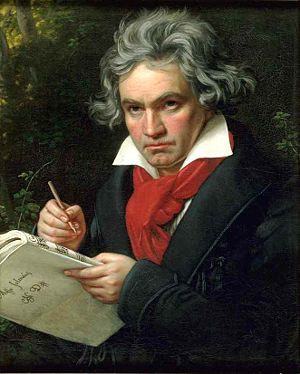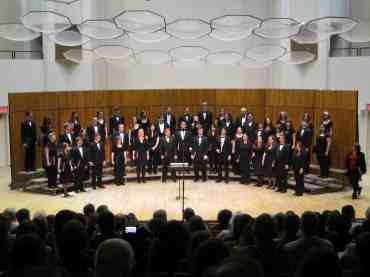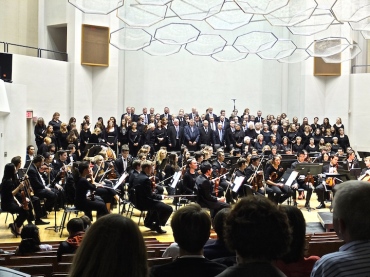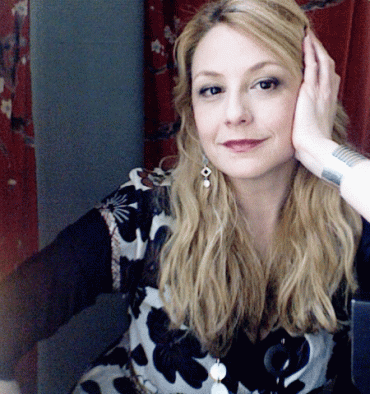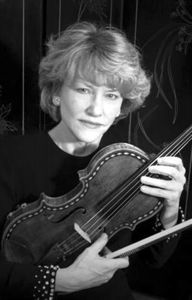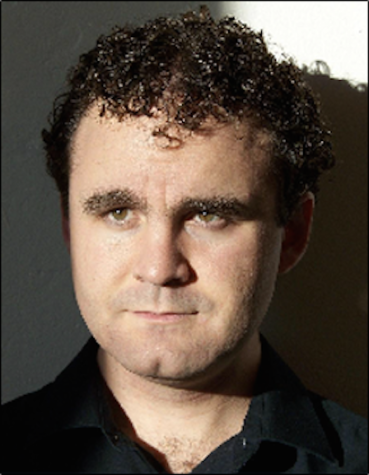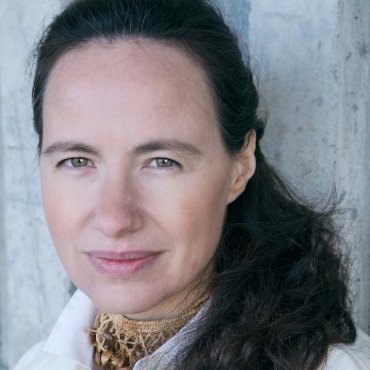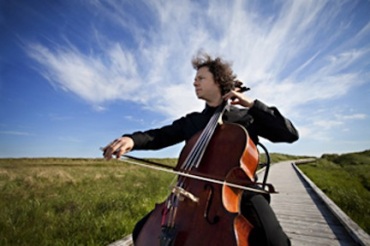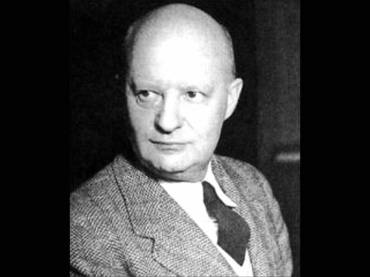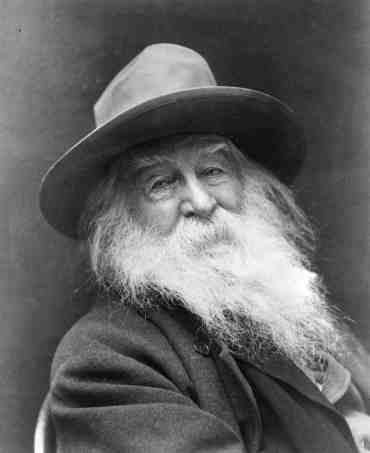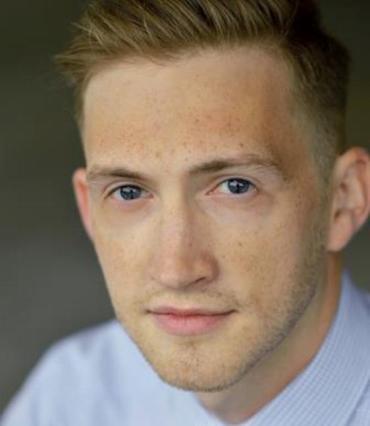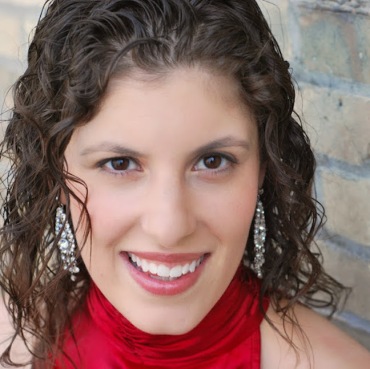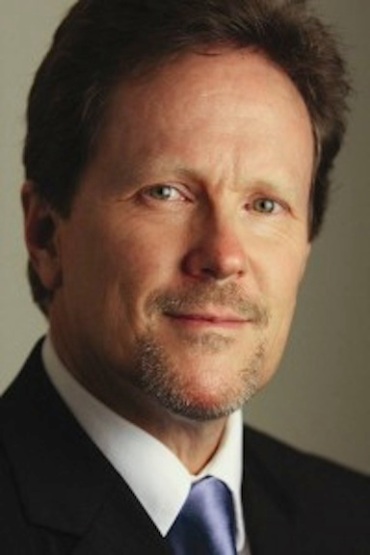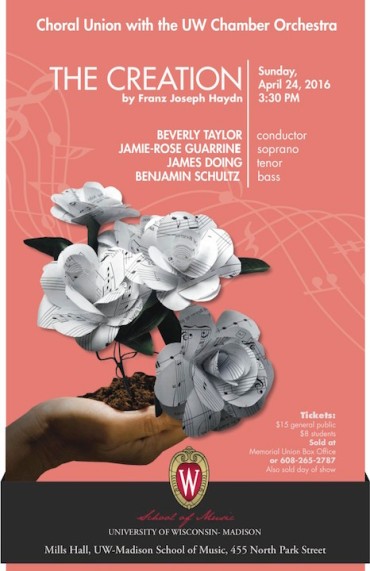The Well-Tempered Ear
Beethoven’s Ninth turns 200 today
2 Comments
PLEASE HELP THE EAR. IF YOU LIKE A CERTAIN BLOG POST, SPREAD THE WORD. FORWARD A LINK TO IT OR, SHARE IT or TAG IT (not just “Like” it) ON FACEBOOK. Performers can use the extra exposure to draw potential audience members to an event. And you might even attract new readers and subscribers to the blog.
By Jacob Stockinger
Perhaps the only symphony more iconic than Beethoven’s Ninth is the Fifth Symphony by the same composer (below).
But today we celebrate the premiere of the pioneering Ninth Symphony that took place 200 years ago on May 7, 1824. Below is the original poster announcing the concert program with the premiere, which Beethoven conducted in his total deafness.
Here is a link to an anniversary story, with lots of historical background about the original performance, by the PBS affiliate WETA in Washington, D.C.:
https://weta.org/fm/classical-score/may-7-1824-200th-anniversary-premiere-beethovens-symphony-no-9
The 70-minute-long Ninth — also called the “Choral” Symphony — is a remarkable work in so many ways. It remains perhaps the most universal music ever written, meaningful to many different individuals and cultures.
Unlike most symphonies of the time, the opening does not immediately announce a theme. It seems to drift around until it finds a solid key and recognizable theme and rhythm. And then it takes off. It reminds The Ear of the depiction by Haydn, Beethoven’s teacher, in his oratorio “The Creation.”
The New York Times also has an essay by Daniel Barenboim about the meaning of Beethoven’s Ninth. No doubt that would be interesting and enlightening to read. But unfortunately the Times hides it behind a pay wall. Only subscribers get to see it right now.
Instead, here is a comprehensive look in Wikipedia:
https://en.wikipedia.org/wiki/Symphony_No._9_(Beethoven)
The famous choral setting of German poet Friedrich Schiller’s 1785 “Ode to Joy” of the last movement is also the official hymn of the European Union. This was the first use of a chorus in a symphony but would not be the last.
In Japan, the same “Ode to Joy” is sung en masse with a chorus up to 10,000 in stadiums every New Year’s Day and on other special occasions, as you can see in the YouTube video at the bottom, an event that took place after a horrendous earthquake and tsunami. The idealistic music embodies the journey from despair to hope, and to brotherhood and solidarity with all people and all nations.
Leonard Bernstein directed it in Berlin to mark the fall of the Berlin Wall and the coming of German reunification.
As its theme, the nightly Huntley-Brinkley New Report on NBC used to use the percussive, pounding, rhythmically propulsive Scherzo movement — which is The Ear’s favorite movement.
The Ear also thinks that the soulful slow movement has strong suggestions of the lovely and well-known slow movement of Beethoven’s earlier “Pathétique” piano sonata. But it doesn’t seem to have been used as a theme or in a movie soundtrack. Does anyone know differently?
What does the Ninth Symphony mean to you?
What do you think of the Ninth and how do you rank it among other symphonies?
Do you have a favorite recording or performance?
What is your favorite movement of Beethoven’s Ninth?
What other uses of The Ninth do you know of?
The Ear wants to hear
Tags: #ClassicFM, 1824, 2024, America, American, Android, anniversary, anthem, Apple, Arts, Asia, asian, audience, Beethoven, Beethoven's Fifth, Beethoven's Ninth, Berlin Wall, Bing, blog, Broadcast, brotherhood, CD, celebrate, chaos, China, Chinese, choral music, Choral Symphony, chorus, Classical, Classical music, Compact Disc, composer, Concert, conductor, culture, Daniel Barenboim, deaf, deafness, depair, different, disability, drift, duckduckgo, earthquake, en masse, European Union, Facebook, fampus, favorite, Fürtwangler, fifth, film, Friedrich Schiller, German, Germany, Google, Google Alert, Google Alerts, Google Search, Haydn, hearing disabled, hope, Huntley-Brinkley, hymn, icon, iconic, ideakistic, idealism, individual, Jacob Stockinger, Japan, Japanese, journalism, journalist, key, Korea, Korean, Leonard Bernstein, link, Ludwig van Beethoven, Madison, Madison Symphony Orchestra, May 7, mean, meaning, Microsoft, Microsoft Bing, movement, movie, Music, NBC, New Year's Day, New York Times, news, ninth, Ode to Joy, official, opening, oratorio, Orchestra, original, OS, pathetique, Pathetique Sonata, PBS, perform, performance, Piano, pioneering, poem, Poetry, Poster, premiere, program, propulsive, recording, remarkable, report, reunification, rhythm, Romantic, Safari, Scherzo, share, solidarity, soloist, Sonata, soul, soulful, soundtrack, South Korea, South Korean, stadium, Student, suggestion, symphony, tag, take off, takeoff, Teacher, Television, The Creation, The Ear, The Well-Tempered Ear, theme, tidal wave, today, Toscanini, tsunami, TV, Twitter, U.S., United States, universal, University of Wisconsin-Madison School of Music, University of Wisconsin–Madison, US, use, vocal music, wander, well-known, Well-Tempered, welltempered, WETA, Wikipedia, Wisconsin, WordPress, Wordpress.com, work, X, you, YouTube
The New York Times names the top 25 classical recordings of 2020 and includes sample tracks
Leave a Comment
PLEASE HELP THE EAR. IF YOU LIKE A CERTAIN BLOG POST, SPREAD THE WORD. FOWARD A LINK TO IT or SHARE IT or TAG IT (not just “Like” it) ON FACEBOOK. Performers can use the extra exposure to draw potential audience members to an event. And you might even attract new readers and subscribers to the blog.
By Jacob Stockinger
What did the holidays bring you?
Did Hanukkah, Christmas or Kwanzaa bring you a gift card?
A subscription to a streaming service?
Maybe some cash?
Or maybe you just want to hear some new music or new musicians or new interpretations of old classics?
Every year, the music critics of The New York Times list their top 25 recordings of the past year. Plus at the end of the story, the newspaper offers a sample track from each recording to give you even more guidance.
This year is no exception (below).
In fact, the listing might be even more welcome this year, given the coronavirus pandemic with the lack of live concerts and the isolation and self-quarantine that have ensued.
The Ear hasn’t heard all of the picks or even the majority of them. But the ones he has heard are indeed outstanding. (In the YouTube video at the bottom, you can hear a sample of the outstanding Rameau-Debussy recital by the acclaimed Icelandic pianist Vikingur Olafssen, who scored major successes with recent albums of Philip Glass and Johann Sebastian Bach.)
Here is a link: https://www.nytimes.com/2020/12/17/arts/music/best-classical-music.html
Of course not all critics agree.
The Ear has already listed the nominations for the Grammy Awards (a link is below), and more critics’ picks will be featured in coming days.
You should also notice that a recording of Ethel Smyth’s “The Prison” — featuring soprano Sarah Brailey (below), a graduate student at the UW-Madison’s Mead Witter School of Music and a co-founder of Just Bach — is on the Times’ list as well as on the list of Grammy nominations.
What new recordings – or even old recordings — would you recommend?
The Ear wants to hear.
Tags: #AlexanderScriabin, #AmazonMusic, #AmericanJazz, #AnnaThorvaldsdottir, #AnthonyTommasini, #AntoineForqueray, #ArchivMusic, #AshFure, #AvieRecords, #BangonaCan, #BarnesandNoble, #BaroqueDance, #BaroqueMusic, #BaroqueOpera, #BavarianRadioSymphoyOrchestra, #BenjaminGrosvenor, #BlackAmericans, #BlogPost, #BlogPosting, #CarolinWidmann, #CelloSuites, #ChamberMusic, #ChandosRecords, #ChoralMusic, #ChristmasHoliday, #ClaudeDebussy, #CorinnadaFonseca-Wollheim, #CoronavirusPandemic, #COVID-19, #CriticallyAcclaimed, #DanillTrifonov, #DavidGreilsammer, #DavidHertzberg, #DeccaRecords, #DeutscheGrammophon, #DriftMultiply, #DukeEllington, #ElimChan, #EriksEsenvalds, #EthelSmyth, #FacebookPost, #FacebookPosting, #FairyTale, #FergusonMissouri, #FranzSchubert, #FredericChopin, #GeorgeFridericHandel, #GeorgeLewis, #GiftCard, #GraduateStudent, #GrammyAward, #GrammyAwards, #HermannScherchen, #HistoricallyInformedPerformancePractices, #HolidayGift, #HolidayGiftGuide, #IgorStravinsky, #InternationalContemporaryEnsemble, #JacobStockinger, #JanLadislavDussek, #Jean-EfflamBavouzet, #Jean-FéryRebel, #Jean-PhilippeRameau, #JohannNepomukHummel, #JohannSebastianBach, #JohnnyGandelsman, #JosephC.PhillipsJr., #JosephWölfl, #JoshuaBarone, #JoyceDiDonato, #JustBach, #KarimSulayman, #KirillGerstein, #LiliBoulanger, #LincolnCenter, #LiveConcert, #LivingComposers, #LudwigVanBeethoven, #MariinskyOrchestra, #MariinskyTheaterOrchestra, #MeadWitterSchoolofMusic, #MeredithMonk, #Mezzo-sopranoSinger, #MirareRecords, #MusicalInterpretation, #MusicCritics, #Muzio, #NadiaBoulanger, #NaiveRecords, #NathalieJoachim, #NewMusic, #NewYorkCity, #NewYorkTimes, #NicholasPhan, #OldClassics, #OlivierMessiaen, #PeriodInstruments, #PhilipGlass, #PianoConcerto, #PianoSonata, #PierreHantai, #RebeccaSaunders, #RichardWagner, #RoyalScottishNationalOrchestra, #SampleTrack, #SarahBrailey, #Self-Isolation, #Self-Quarantine, #SergeiProkofiev, #ShiverLung, #SilverAge, #SoloPiano, #SopranoSinger, #SoundSample, #StreamingService, #TenorSinger, #TheBeethovenConnection, #TheEar, #TheExterminatingAngel, #ThePrison, #TheUK, #TheUW, #ThomasAdès, #TopRecordings, #TristanPerich, #UnitedKingdom, #UniversityofWisconsin-Madison, #ValeryGergiev, #ViennaStateOperaOrchestra, #VikingurOlafsson, #VocalMusic, #WyntonMarsalis, #Yi-hengYang, #YouTubevideo, #ZacharyWoolfe, 2020, acclaimed, African American, Agrippina, Alexander Scriabin, Amazon, Amazon Music, amazon.com, America, Anna Thorvaldsdottir, Anthony Tomassini, Antoine Forqueray, Archiv Music, Arts, Ash Fure, audience, Avie Records, award, Bach, Bang on a Can, Barnes and Noble, Baroque, Baroque music, Baroque opera, Bavarian Radio Symphony Orchestra, Beethoven, Benjamin Grosvenor, Berceuse, black, blog, brilliant, BrowandBeige, Brown and Beige, Carolin Widmann, cash, Cello, Cello Suite, centuries, Chamber music, Chandos Records, chaos, China, Chinese, Chopin, choral music, Christmas, Classical music, classics, Claude Debussy, Clementi, coming, composer, Concert, concerto, conductor, connection, conversation, Corinna da Fonseca-Wollheim, coronavirus, dance, Daniil Trifonov, David Greilsammer, David Hertzberg, days, Debussy, Decca, Decca Records, Deutsche Grammophon, DG, drift, Drift Multiply, Duke Ellington, Dussek, Early music, Earth, Elim Chan, end, Eriks Esenvalds, Ethel Smyth, exception, Facebook, Facebook post, Facebook posting, fairy tale, Ferguson, fortepiano, Franz Schubert, Frédéric Chopin, George Frederic Handel, George Lewis, gift, gift card, gigue, Glass, graduate student, Grammy, guidance, Handel, Hanukkah, harpsichord, hear, Hermann Scherchen, historically informed performance practices, Holiday, Hummel, Iceland, Icelandic, Igor Stravinsky, International Contemporary Ensemble, interpretation, isolation, Jacob Stockinger, Jan Ladislav Dussek, Jazz, Jean-Efflam Bavouzet, Jean-Féry Rebel, Jean-Philippe Rameau, Johann Nepomuk Hummel, Johann Sebastian Bach, Johnny Gandelsman, Joseph C. Phillips Jr., Joseph Wölfl, Joshua Barone, Joyce DiDonato, Just Bach, Karim Sulayman, Kirill Gerstein, Kwanzaa, Labyrinth, lack, like, Lili Boulanger, LIncoln Center, link, listing, live concert, living composers, Love, Ludwig van Beethoven, lullaby, Mariinsky Orchestra, Mariinsky Theatre Orchestra, me, Mead Witter School of Music, Meredith Monk, Messiaen, Mezzo-soprano, Mirare Records, Missouri, multiply, Music, music critics, Musician, Muzio Clementi, Nadia Boulanger, Naive Records, Nathalie Joachim, new, New Music, New York City, New York Times, Newspaper, Nicholas Phan, nominations, old, old classics, Olivier Messiaen, opera, Orchestra, Overture, pandemic, past, period instruments, Philip Glass, Pianist, Piano, Piano concerto, Piano Concerto No. 1, Piano sonata, Pierre Hantai, post, posting, Prokofiev, quiet, Rameau, Ravel, reader, Rebecca Saunders, Rebel, recital, Recordings, reverential, Richard Wagner, Romance, Royal Scottish National Orchestra, sample, sample track, Sarah Brailey, Schubert, Scotland, Scottish, Scriabin, Sergei Prokofiev, share, Shiver Lung, Silver Age, Solo Cello Suites, solo piano, Sonata, song, songs, soprano, Spotify, story, Stravinsky, streaming service, subscriber, subscription, Suite, symphony, tag, teach, tender, tenor, The Beethoven Connection, The Ear, The Exterminating Angel, The Prison, Thomas Ades, top, top recordings, track, transcription, Tristan Perich, UK, United Kingdom, United States, University of Wisconsin-Madison School of Music, University of Wisconsin–Madison, UW, UW-Madison, Valery Gergiev, Vienna State Opera Orchestra, Vikingur Olafsson, Viola, Violin, violinist, violist, vocal music, Wagber, Wynton Marsalis, Yang, year, Yi-heng Yang, you, YouTube, Zachary Woolfe
Classical music: The UW Concert Choir, Choral Union and Symphony Orchestra will perform world premieres, local premieres and new music in three concerts this weekend
1 Comment
By Jacob Stockinger
The Ear has received the following messages from UW composer Laura Schwendinger and from Beverly Taylor, the director of choral activities at the University of Wisconsin-Madison School of Music who is also the assistant conductor and chorus director of the Madison Symphony Orchestra:
Writes conductor Beverly Taylor: This is a busy and musically fascinating weekend for me coming up.
On Friday night at 8 p.m. in Mills Hall, there is a special concert by the Concert Choir (below) on the subject of Art Born of Tragedy, with the acclaimed guest cellist Matt Haimovitz.
Tickets are $15, $5 for students. For more information about tickets as well as the performers and the program, go to:
http://www.music.wisc.edu/event/uw-concert-choir-4-matt-haimovitz/
Then in Mills Hall at 8 p.m. on Saturday night and at 7:30 p.m. on Sunday night, there are two performances of When Lilacs Last in the Dooryard Bloomed by the 20th-century composer Paul Hindemith by the UW Choral Union and the UW Symphony Orchestra (below). It is a work that to my knowledge has never been performed in Madison.
Tickets are $15, $8 for students. For more information about obtaining tickets and about the concert, visit:
http://www.music.wisc.edu/event/uw-choral-union-uw-symphony-orchestra/
Here is more information about the events:
CONCERT CHOIR
The Concert Choir performance explores in music of several centuries the theme of “Art Born of Tragedy” — how outside events can be the spark that causes the creation of works of substance that range from the gentle and comforting to rage and despair.
We will sing music from the Renaissance: part of the Thomas Tallis’ “Lamentations of Jeremiah (on the ancient destruction of Jerusalem),” and a John Wilbye madrigal “Draw on Sweet Night for a Broken Heart.”
We will present three works from modern composers: one is a world premiere by the prize-winning composer Laura Schwendinger (below top), my colleague at the UW-Madison, for viola — played by Sally Chisholm (below bottom) of the UW Pro Arte Quartet — and wordless chorus. It is called “For Paris” in memory of those killed in the Paris terrorist bombings of 2015.
(Adds composer Laura Schwendinger: “The viola starts this short work by referencing only for a moment the merest idea of a ‘musette song,’ one that might be heard on an evening in a Paris cafe. The choir enters with a simple refrain that repeats again and again, each time with a little more material, as an unanswered question of sorts. Each time the viola reenters the texture, the music becomes more pressing in a poignant manner, until it arrives in its highest register, only to resolve with the choir as it quietly acquiesces in the knowledge that the answer may not be known.”)
We will present a short “O vos omnes” (O you who pass by) written by Pennsylvania composer Joseph Gregorio (below), composed in memory of a Chinese girl hit by a car and left to die.
The third piece is a reprise of “Après moi, le deluge” by Luna Pearl Woolf (below top), which we premiered and recorded 11 years ago. We are lucky to have back the wonderful internationally known cellist Matt Haimovitz (below bottom), who premiered this work with it. The text, written by poet Eleanor Wilner, mixes the Noah story with the Hurricane Katrina disaster.
The term “Après moi, le deluge” is a term attributed to Louis XV or his mistress Madame Pompadour, and means “after me the flood” — referring either to the chaos after his reign, or that what happens afterword bears no importance for him.
The work has four different moods like a symphony — with strong themes at the start and cries for help, followed by the slow movement despair, a scherzo-like depiction of havoc, and a final movement that is like a New Orleans funeral, upbeat and Dixieland.
Throughout the program we also present spirituals that depict loneliness or salvation from trouble.
UW CHORAL UNION
In certain ways, When Lilacs Last in the Dooryard Bloomed resembles the Concert Choir concert in that it contains a number of moods and styles as well, under a dark title. The subtitle of the work is “a Requiem for Those We Love.”
It was commissioned by the great choral and orchestral conductor Robert Shaw as a tribute to President Franklin Delano Roosevelt on his death and the train ride that carried him from Warm Springs, Georgia, to Washington, D.C.
The text that Paul Hindemith (below top) chose is by Walt Whitman (below bottom), who wrote his poem on the death of Abraham Lincoln, and the funeral train from Washington, D.C., to Springfield, Illinois.
Whitman’s grief is combined with pride and joy in the countryside that the train traverses, and his feelings find an outlet in the thrush that sings out its song. His sense of a sustaining universe is a contrast to his depiction of the despair and ravages of the Civil War.
Hindemith’s calling the work a “Requiem for Those We Love,” puts it, like the Brahms’ “German” Requiem, into a class of non-liturgical requiems — that is, the texts are not those that are part of the Catholic Mass for the Dead, but are other selected texts of joy or remembrance.
Hindemith’s style can loosely be described as tonal that veers away into dissonance and returns again to the home key. The Prelude and opening movement are dark; the solo songs of baritone (James Held, below top) and mezzo-soprano (Jennifer D’Agostino, below bottom) are marvelous; the fugue on the glories of America is glorious and other sections are soft and tender. (NOTE: You can hear the orchestral prelude of the work, with composer Paul Hindemith conducting the New York Philharmonic, in the YouTube video at the bottom.)
The work is hard for both chorus and orchestra, but well worth the effort. The piece is about 80 minutes long and will be performed without interruption. It’s a work I’ve always wanted to do, having heard it performed at Tanglewood many years ago. I’m delighted to have the chance now.
Tags: 20th-century, Art, Arts, auto, baritone, Beverly Taylor, born, cafe, car, Catholic, Chamber music, chaos, China, Chinese, Choir, choral music, Choral Union, chorus, Civil War, Classical music, comfort, composer, Concert Choir, conductor, D.C., dead, despair, dissonance, Dixieland, Early music, Eleanor Wilner, FDR, Franklin Delano Roosevelt, fugue, funeral, gentle, Georgia, grief, heart, Hurricane, Hurricane Katrina, ILLINOIS, Jacob Stockinger, James Held, Jennifer D'Agostino, Jeremiah, Jerusalem, John Wilbye, Joseph Gregorio, Joy, Kartrina, lamentation, Laura Schwendinger, Lincoln, liturgical, liturgical music, Louis XV, Love, Madame Pompadour, Madison, Madison Symphony Orchestra, madrigal, mass, Matt Haimovitz, Mezzo-soprano, musette, Music, New Music, New Orleans, New York Philharmonic, Orchestra, Paris, Paul Hindemith, Pennsylvania, poet, Prelude, premiere, President, Pro Arte Quartet, rage, ravages, reign, remembrance, Renaissance, Requiem, Requiem Mass, Robert Shaw, Scherzo, song, Springfield, symphony, symphony orchestra, Tanglewood, Tanglewood Festival, terror, terrorist, Thomas Tallis, tonal, tragedy, train, United States, universe, University of Wisconsin-Madison School of Music, University of Wisconsin–Madison, UW, Viola, Violin, vocal music, Walt Whitman, Warm Springs, Washington, When Lilacs Last in the Dooryard Bloomed, Wisconsin, world premiere, YouTube
Classical music: Can arias from Baroque operas address current chaos and concerns? Singer Joyce DiDonato thinks so. Plus, a FREE concert of music by Dvorak, Debussy, Frank Bridge and Amy Beach is at noon on Friday
Leave a Comment
ALERT: This week’s FREE Friday Noon Musicale at the First Unitarian Society of Madison, 900 University Bay Drive, features Shannon Farley, viola, with Chris Allen, guitar; Leah King and Jason Kutz, piano; Elspeth Stalter Clouse and Ela Mowinski, violin; Leslie Damaso, mezzo-soprano; and Morgan Walsh, cello. They will perform the Piano Quintet in A Major, Op. 81, by Antonin Dvorak; Three Songs for Mezzo-soprano, viola and piano by Frank Bridge; “Beau Soir” (Beautiful Evening) for guitar and viola by Claude Debussy; and a Romance for violin by Amy Beach as arranged for viola and piano. The concert runs from 12:15 to 1 p.m.
By Jacob Stockinger
Can the past help us understand and weather the present time with its conflicts and chaos?
Mezzo-soprano and Grammy Award winner Joyce DiDonato (below) thinks so.
In fact her latest album, for the Erato-Warner label, of arias from Baroque operas from the 17th and 18th centuries is dedicated to that proposition. The album’s title is “In War and Peace: Harmony Through Music” (below).
It includes arias from opera by George Frideric Handel (one of which you can hear in the YouTube video at the bottom), Henry Purcell, Niccolo Jommelli, Leonardo Leo and Claudio Monteverdi, and it features two world premiere recordings as well as familiar works.
The singer talks about her concept album in an interview with Ari Shapiro of “All Things Considered” on National Public Radio (NPR).
She boils much of her viewpoint down to one question: In the widest of chaos, how can you find peace?
Sure seems timely, given foreign wars and domestic political strife.
Here is a link with the interview and some fetching music:
Listen to it.
See what you think.
Then let the rest of us know what you think, and whether you agree or disagree, and whether you have other works that come to mind.
The Ear wants to hear.
Tags: Amy Beach, aria, Arts, Baroque, CD, Cello, chaos, choral music, Classical music, Claudio Monteverdi, conflict, Debussy, Dvorak, Erato, First Unitarian Society of Madison, Frank Bridge, George Frideric Handel, Grammy, Grammy Award, guitar, harmony, Jacob Stockinger, Jommelli, Joyce DiDonato, Leonardo Leo, Madison, Mezzo-soprano, Music, NPR, opera, Orchestra, peace, Piano, Purcell, quintet, Romance, sing, singer, symphony, United States, University of Wisconsin-Madison School of Music, University of Wisconsin–Madison, Viola, Violin, vocal music, war, Warner, Wisconsin, YouTube
Classical music: Turning chaos into order. Conductor Beverly Taylor explains what makes Haydn’s “The Creation” special and fun to listen to. The UW-Madison Choral Union and UW Chamber Orchestra with soloists will perform it on Sunday afternoon.
Leave a Comment
By Jacob Stockinger
This coming Sunday afternoon at 3:30 p.m. in Mills Hall, the campus-community UW-Madison Choral Union (below), the UW Chamber Orchestra and soloists will perform the oratorio the “The Creation” by the Classical-era master Franz Joseph Haydn.
First, The Ear wants to clear up any confusion about the date of the performance – which is ONE-TIME ONLY. (In the past, the Choral Union usually gave two performances.) The performance was originally scheduled for Sunday afternoon. Then it was moved to Saturday night and then, after a conflict with the Jewish Passover was seen, moved back to Sunday afternoon.
Tickets are $15 for the general public, $8 for students. For more information about tickets, the work and the performers, here is a link:
http://www.music.wisc.edu/event/uw-choral-union2/
Beverly Taylor, director of choral activities at the University of Wisconsin-Madison School of Music who will conduct the performance, agreed to do an email Q&A with The Ear:
What is the place of Haydn’s “The Creation” is the choral literature? Was it influential? Popular?
It’s considered wonderful and innovative. Its choruses are magnificent, and the opening depiction of Chaos is unlike anything that had been heard up to that time.
It was written late in Haydn’s career, and showed many aspects of his wonderful talent, including musical depictions of non-musical things—water, birds, dawn — and has terrific pacing of the extended choruses building to majestic climaxes.
The premiere was enthusiastically received. It was indeed popular, although the composer’s late masses also deserve great attention. The other vocal works by Haydn (below), such as “The Seasons,” are more slowly paced, and although they contain great music, they are not often felt to be as compelling as “The Creation” with its easy-to-follow sequence of creative days.
Are there special moments or parts of the work you would like to point out to the public? How about special aspects of the performance?
Yes! One thing to do is to listen with an open mind to Chaos. (You can preview “Chaos” in a YouTube video at the bottom as performed by Christopher Hogwood and the Academy of Ancient Music.)
When I first heard a dull performance of it years ago, I wondered what the big deal was. Then I took a good look at it: It contains chaotic oddities — a horn suddenly blaring loudly with no reference to other instruments, a trilling flute that never resolves its trill, bassoons and clarinets who play bubbling and pointless arpeggios until it all settles down to begin the first day of the Creation (famously depicted below by the British artist and poet William Blake).
There are also delightful musical depictions and sound paintings of weather that can be confusing unless you know that the orchestra depicts the weather before the bass tells us about it. That way hail won’t sound like snow! The same holds true for the description of animals — we hear the leaping stags before our singer tells us.
There will be terrific moments in the work — orchestral playing, fabulous choral singing. And there will be wonderful solo work by our experienced alumni and faculty artists soprano Jamie-Rose Guarrine (below top), tenor James Doing (below second), bass-baritone Benjamin Schultz (below third) and baritone Benjamin Li (below bottom). It’s a pleasure to make music with them.
Composer John Harbison says that Haydn is the most neglected of all the great composers. Why do you think Haydn isn’t thought of more highly and performed more often?
Among musicians, Haydn is certainly thought of highly, and many people enjoy his work, especially the element of surprise in his work — sforzandos, sudden silences, changes of rhythm.
But many of his works are chamber works designed for smaller rooms and audiences. And in our modern life, the size of the orchestra and special instruments and added theatrical elements often attract more people. Haydn’s chamber works are fabulous, but sometimes subtle. However, they repay well those who pay attention to them.
What else would you like to say about the composer, this particular work or this performance?
Haydn was influenced by and had influence on Wolfgang Amadeus Mozart and Ludwig van Beethoven, on all the European composers. But what inspires audiences — including, we hope, ours — is the immediacy of the beauty of the music. You don’t need special training to jump right in and listen.
Tags: Academy of Ancient Music, animal, arpeggio, Arts, baritone, Baroque, bass, Bassoon, bassoons, Beethoven, Benjamin Li, Benjamin Schultz, Chamber music, chaos, choral music, Christopher Hogwood, clarinet, clarinets, Classical era, Classical music, Creation, flute, Genesis, Haydn, Jacob Stockinger, James Doing, Jamie-Rose Guarrine, Jew, Jewish, John Harbison, Ludwig van Beethoven, Madison, Moment of silence, Mozart, Music, oratorio, Orchestra, Passover, popular music, rhythm, soprano, sound painting, symphony, tenor, The Creation, The Seasons, trill, United States, University of Wisconsin-Madison School of Music, University of Wisconsin–Madison, UW Chamber Orchestra, UW Choral Union, Viola, Violin, vocal music, weather, William Blake, Wisconsin, Wolfgang Amadeus Mozart, YouTube
- May 2024
- April 2024
- March 2024
- February 2024
- January 2024
- December 2023
- November 2023
- October 2023
- September 2023
- August 2023
- July 2023
- June 2023
- May 2023
- April 2023
- March 2023
- February 2023
- January 2023
- December 2022
- October 2022
- September 2022
- June 2022
- May 2022
- April 2022
- March 2022
- July 2021
- June 2021
- May 2021
- April 2021
- March 2021
- February 2021
- January 2021
- December 2020
- November 2020
- October 2020
- September 2020
- August 2020
- July 2020
- June 2020
- May 2020
- April 2020
- March 2020
- February 2020
- January 2020
- December 2019
- November 2019
- October 2019
- September 2019
- August 2019
- July 2019
- June 2019
- May 2019
- April 2019
- March 2019
- February 2019
- January 2019
- December 2018
- November 2018
- October 2018
- September 2018
- August 2018
- July 2018
- June 2018
- May 2018
- April 2018
- March 2018
- February 2018
- January 2018
- December 2017
- November 2017
- October 2017
- September 2017
- August 2017
- July 2017
- June 2017
- May 2017
- April 2017
- March 2017
- February 2017
- January 2017
- December 2016
- November 2016
- October 2016
- September 2016
- August 2016
- July 2016
- June 2016
- May 2016
- April 2016
- March 2016
- February 2016
- January 2016
- December 2015
- November 2015
- October 2015
- September 2015
- August 2015
- July 2015
- June 2015
- May 2015
- April 2015
- March 2015
- February 2015
- January 2015
- December 2014
- November 2014
- October 2014
- September 2014
- August 2014
- July 2014
- June 2014
- May 2014
- April 2014
- March 2014
- February 2014
- January 2014
- December 2013
- November 2013
- October 2013
- September 2013
- August 2013
- July 2013
- June 2013
- May 2013
- April 2013
- March 2013
- February 2013
- January 2013
- December 2012
- November 2012
- October 2012
- September 2012
- August 2012
- July 2012
- June 2012
- May 2012
- April 2012
- March 2012
- February 2012
- January 2012
- December 2011
- November 2011
- October 2011
- September 2011
- August 2011
- July 2011
- June 2011
- May 2011
- April 2011
- March 2011
- February 2011
- January 2011
- December 2010
- November 2010
- October 2010
- September 2010
- August 2010
- July 2010
- June 2010
- May 2010
- April 2010
- March 2010
- February 2010
- January 2010
- December 2009
- November 2009
- October 2009
- September 2009
- August 2009
Archives
- 2,491,501 hits
Blog Stats
Recent Comments
| Brian Jefferies on Classical music: A major reass… | |
| welltemperedear on What made Beethoven sick and… | |
| rlhess5d5b7e5dff on What made Beethoven sick and… | |
| welltemperedear on Beethoven’s Ninth turns 200… | |
| Robert Graebner on Beethoven’s Ninth turns 200… |
Tags
#BlogPost #BlogPosting #ChamberMusic #FacebookPost #FacebookPosting #MeadWitterSchoolofMusic #TheEar #UniversityofWisconsin-Madison #YouTubevideo Arts audience Bach Baroque Beethoven blog Cello Chamber music choral music Classical music Compact Disc composer Concert concerto conductor Early music Facebook forward Franz Schubert George Frideric Handel Jacob Stockinger Johannes Brahms Johann Sebastian Bach John DeMain like link Ludwig van Beethoven Madison Madison Opera Madison Symphony Orchestra Mead Witter School of Music Mozart Music New Music New York City NPR opera Orchestra Overture Center performer Pianist Piano post posting program share singer Sonata song soprano String quartet Student symphony tag The Ear United States University of Wisconsin-Madison School of Music University of Wisconsin–Madison Viola Violin vocal music Wisconsin Wisconsin Chamber Orchestra wisconsin public radio Wolfgang Amadeus Mozart YouTube